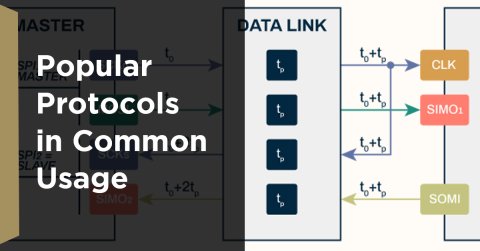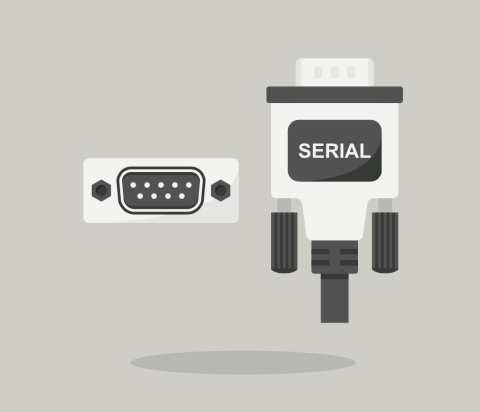The Skin Effect, Current Density, and the Electromagnetic Field

During this year's AltiumLive CONNECT event, I recall receiving an interesting question about the skin effect and the distribution of current due to the presence of ground in coplanar transmission lines. At the time, I didn't think it was worth writing about, but I recently received the same question again, this time looking at microstrips. Here is the question:
- If the skin effect focuses the electric field below a trace, then why does surface roughness on a microstrip affect impedance?
First, the question reveals an important misconception about the skin effect, where the current density is concentrated, and the electromagnetic field around a transmission line. While this is certainly not a common question, I still think it is an instructive physical situation to discuss as it illustrates the basic physics surrounding the skin effect and current density in a transmission line. So in this article, we'll look at the electric field around a transmission line carrying a signal, and how this might be impacted by the skin effect. You may have seen images of electric field lines around transmission lines on the internet. These images are correct, but I'll go a bit further and explain why they matter in terms of current density and the skin effect.
Electric & Magnetic Field Lines Around a Transmission Line
It's quite easy to sketch the electric field lines around a transmission line above its ground plane. If you look on Google, you will likely find many images showing the electric field and magnetic field components around a transmission line in a PCB. The image below shows a sketch of these field lines around a trace and above a ground plane.

The important point to note is that the electric field lines emanate from all surfaces on the trace in the normal direction. They then terminate at the ground plane, also along the normal direction, meaning perpendicular to the ground plane. The field lines begin from the trace wherever there is non-zero charge on the surface, and they produce an equal and opposite image charge in the ground plane. This is a basic result regarding electromagnetic boundary conditions, and this can be confirmed from Maxwell's equations, specifically Gauss's law.
Now back to the question, how does nearby ground affect the current density, and thus the skin effect, along the length of the transmission line? The question as it was asked seems to imply that the skin effect only occurs along the bottom surface of the trace, and the current density would only experience the roughness there. In other words, the incorrect picture is that the ground plane “pulls” the current density to the bottom surface of the trace.
This would look like the picture shown below, where the red region at the bottom of the trace denotes the skin effect current. Next, if you assume that the trace acts like an ideal capacitor, the electric field lines would be concentrated only between the bottom surface of the trace and the ground plane.

The above image is incorrect. While it is true that the presence of nearby conductors (both grounded and floating) will modify the spatial distribution of the electromagnetic field and thus the current distribution on the conductor, the electromagnetic field does not suddenly become concentrated between the trace and the plane just because the skin effect is present. In fact, the skin effect is always present, it is just a matter of the degree of additional impedance created by the skin effect.
What Really Happens to the Fields?
The electromagnetic field still maintains the same distribution around the transmission line regardless of the skin effect. The current density along the surface of the trace is always the same. It is the concentration of current below the surface that determines the magnitude of the additional impedance produced by the skin effect. Obviously, this varies with frequency, where higher frequency leads to Greater current concentration beneath the surface of the conductor. In other words the volumetric current density increases, but the surface current stays the same and has the same distribution in space at all frequencies.

How do we know the above image is correct? We can confirm this by disproving the incorrect current density image shown above. The distribution of the electric field around the transmission line as shown above produces some important results that are known from transmission line theory, specifically regarding the impedance of a transmission line as a function of frequency.
Fringing Capacitance
If the field were totally concentrated on the bottom surface of the trace, then there would be no fringing capacitance, and the distributed capacitance of the transmission line would suddenly decrease by a factor of 3.5 to 4 as soon as the skin effect occured. The fact that the electric field lines pass all the way around the trace and terminate at the nearby ground plane tells us that there must be fringing capacitance. However, the skin effect has no impact on the distributed capacitance of the trace, and therefore the fringing capacitance would not be affected by the skin effect current.
Non-TEM Propagation
If the switching electric field is confined between the trace and the ground plane then the magnetic field would be generated around the electric field lines. In other words we would have transverse electric (TE) mode propagation. This would occur even at frequencies that were not high enough to excite a non-TEM mode in the transmission line structure. Because we know that non-TEM modes are not required for the skin effect to occur, it should be clear that the field should exist elsewhere around the trace rather than between the trace and its reference plane.
Inductive and Resistive Impedance
If the impedance change due to the skin effect was due to a capacitance reduction, then the impedance spectrum of the interconnect would not have any additional resistance. This is not what is observed in real experiments, where measurements show an increase in the inductive and resistive portions of the transmission line impedance. Furthermore, greater copper roughness leads to greater resistive increase, as you would expect from the skin effect confined to a smaller region in the trace’s cross-sectional area.
The above discussion should illustrate why it is so important to understand the basics of the electromagnetic field and how it is related to the behavior of the charges/currents in real media. The above points were discussed in terms of a microstrip transmission line, but the same ideas would apply to a stripline or coplanar configurations. With a better understanding of the electric field and where it exists around a transmission line, it's easier to spot things like parasitics that lead to noise coupling, radiated emissions, and reception of EMI from external sources.
When you need to evaluate your design in a comprehensive simulation-driven workflow, use the complete set of PCB design, layout, and simulation features in Altium Designer®. When you need to examine signal integrity problems and extract S-parameters from your systems, you can use the EDB Exporter extension to import a design into Ansys field solvers and perform a range of SI/PI simulations. The export options from Altium Designer also support other field solvers, such as the specialized Simbeor solver for interconnect evaluation. When you’ve finished your design, and you want to release files to your manufacturer, the Altium 365™ platform makes it easy to collaborate and share your projects.
We have only scratched the surface of what’s possible with Altium Designer on Altium 365. Start your free trial of Altium Designer + Altium 365 today.











